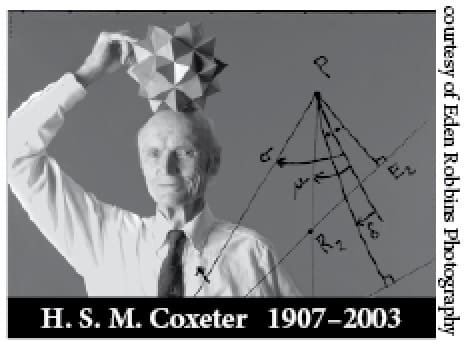
A popular misconception
Many people attempt to visualize a space in which there are 4-dimensions and they will fail because our world consists of only 3 spacial dimensions. However, when mathematicians talk about 4 dimensions, they are talking not about a real space, but rather about a mathematical space in which each point is defined by 4 coordinates.
The First Mathematical Space of Dimension 4
On October 16, 1843, the brilliant mathematician, Sir William Rowan Hamilton had been struggling to find an extension of complex numbers, defined by a + bi, into a third dimension. As he walked with his wife along the Royal Canal in Dublin, Ireland, he had a sudden revelation that by dropping the condition that multiplication is commutative, he could create a mathematical space in which each point was represented by 4 coordinates formed from a three-dimensional vector and a scalar–called a quaternion. While basking in this euphoric Eureka! sensation, he carved the defining formulas for quaternion multiplication into the stone of Broom Bridge (also known as Brougham Bridge):
Since rotations of objects in 3-D space are not commutative, (i.e., rotating an object about two different axes produces different results depending on the order in which the rotations are done) quaternions provided an efficient way of mapping rotations in space. Almost two centuries later quaternions found extensive applications across a wide spectrum of fields including aeronautical engineering involving spacecraft and drone control, as well as in animation for the film industry.
A few years later, Ludwig Schläfli extended the concept of higher-dimensional spaces to dimension n, and created 4-dimensional geometry with his n-dimensional analogues of the polyhedra.
Einstein’s Relativity
One of the most dramatic applications of spaces of dimension greater than 3 emerged in Einstein’s Special Theory of Relativity in which he proposed that space and time are interconnected. An event is defined not only by its location, but also by the time at which it occurs. Hence, representing an event requires four components, including 3 spacial components and 1 time component, represented by the 4-tuple (x, y, z, t). Why is this important?
If two observers A and B, moving at a high speed relative to one another observe a bolt of lighting that ignites a building, each will report a different location and a different time for that event. However, the space-time distance separating two events (x, y, z, t) and (x’, y’ z’ t’) will be the same for all observers. That is, (x–x’)^2 + (y-y’)^2 + (z-z’)^2 -c^2 (t-t’)^2 will be the same for all observers, so distances, when expressed in space-time coordinates will be valid for all observers, making cause-and-effect relationships universally valid.
Factor Analysis
In a challenge to the monarchic view of intelligence, Charles Spearman attempted to create a more complex model of cognitive ability that would legitimize psychology as a hard science by mathematizing measures of intelligence. In 1904, he tested 23 boys in a preparatory school near Oxford on a variety of achievement tests in each of: classics, French, English, mathematics, discrimination of pitch, and music. On analyzing the test results, he asked, “What pervasive cognitive faculty accounts for the fact that a student who does well on any of these tests, usually, but not always, does well on the others?” Spearman hypothesized that the cognitive abilities brought to bear in each test consisted of a general ability, common to all the tests, and a specific ability unique to that test. He called this general factor of cognitive ability the g factor. Spearman’s mathematical procedure for establishing the g factor spawned a mathematical technique now known as factor analysis.
In the Spearman construct, the score z(ij )on test i by student j derives from thatstudent’s general ability g(j) in accordance with the equation:
z(ij) = l(i) g(j) + u(ij) i = 1, 2, … , 6; j = 1, 2, … , 23
where l(i) is the “loading factor” that indicates the degree to which test i draws on g and u(ij) is the ability of student j on test i that does not draw on g.
Spearman sought to demonstrate the existence of the g factor. He reasoned that if, in fact, there were a dominant factor g, the scores z(ij) would derive mainly from the extent to which they drew on g. Out of this came the measure of IQ as a composite of various underlying cognitive abilities tested on subtests of a composite IQ test.
Conclusion
Throughout the 20th century, the representation of relationships by n-dimensional mathematical spaces has become ubiquitous in fields as diverse as economics, chemistry, psychology, computer science, space technology and animation. But remember not to be concerned if you can’t conjure up a mental image of a seven dimensional cube, because we humans have never perceived anything outside 3 spacial dimensions. We can only create higher dimension polyhedra by analogies and by mathematical models.
